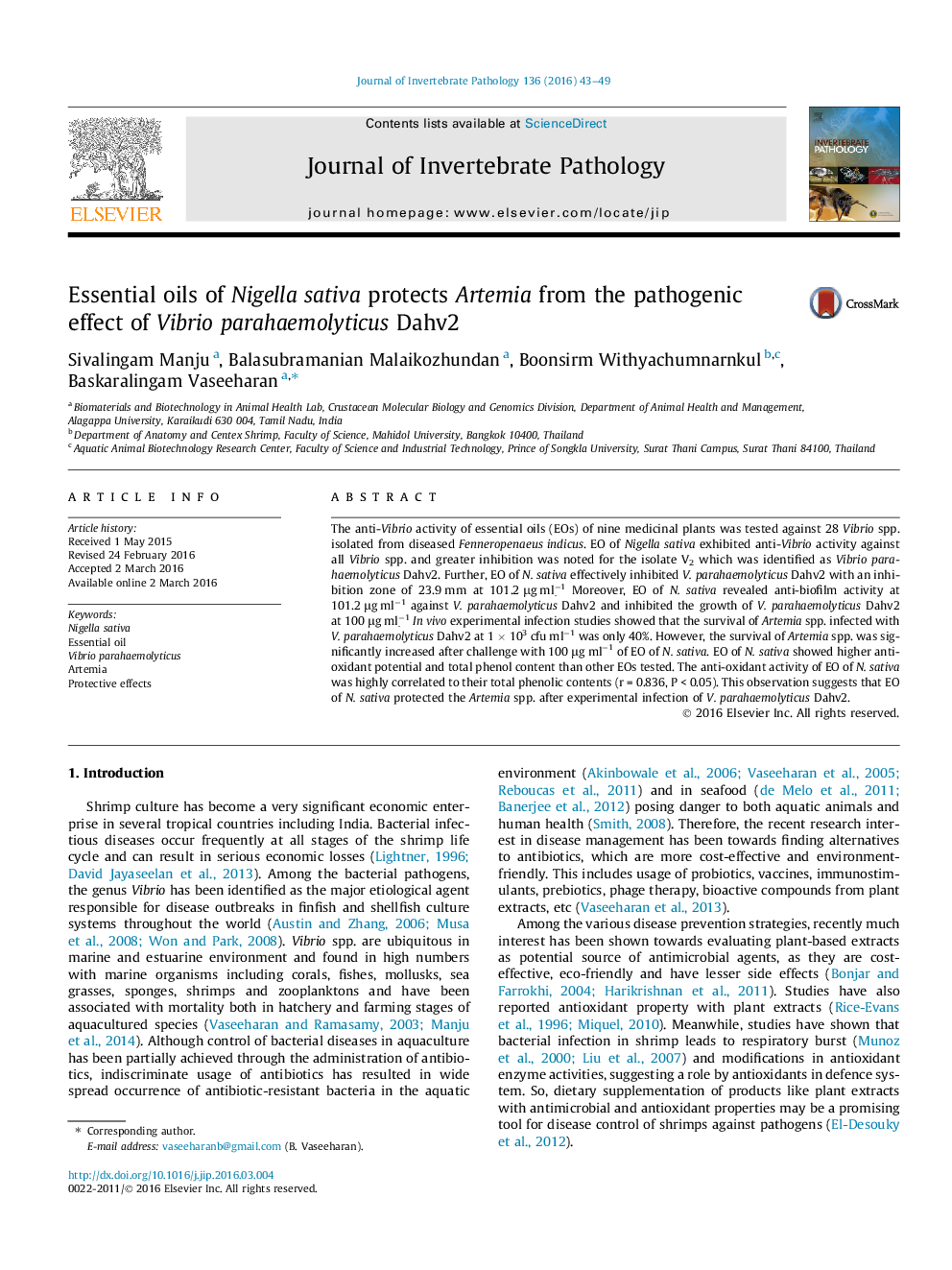| کد مقاله | کد نشریه | سال انتشار | مقاله انگلیسی | نسخه تمام متن |
|---|---|---|---|---|
| 4557580 | 1628216 | 2016 | 7 صفحه PDF | دانلود رایگان |

• Essential oils (EO) were extracted from nine medicinal plants.
• N. sativa EO showed higher inhibitory activity against Vibrio parahaemolyticus Dahv2.
• N. sativa EO significantly protected the survival of Artemia during V. parahaemolyticus Dahv2 challenge.
• N. sativa EO showed higher anti-oxidant and anti-biofilm activity.
The anti-Vibrio activity of essential oils (EOs) of nine medicinal plants was tested against 28 Vibrio spp. isolated from diseased Fenneropenaeus indicus. EO of Nigella sativa exhibited anti-Vibrio activity against all Vibrio spp. and greater inhibition was noted for the isolate V2 which was identified as Vibrio parahaemolyticus Dahv2. Further, EO of N. sativa effectively inhibited V. parahaemolyticus Dahv2 with an inhibition zone of 23.9 mm at 101.2 μg ml−1. Moreover, EO of N. sativa revealed anti-biofilm activity at 101.2 μg ml−1 against V. parahaemolyticus Dahv2 and inhibited the growth of V. parahaemolyticus Dahv2 at 100 μg ml−1.In vivo experimental infection studies showed that the survival of Artemia spp. infected with V. parahaemolyticus Dahv2 at 1 × 103 cfu ml−1 was only 40%. However, the survival of Artemia spp. was significantly increased after challenge with 100 μg ml−1 of EO of N. sativa. EO of N. sativa showed higher anti-oxidant potential and total phenol content than other EOs tested. The anti-oxidant activity of EO of N. sativa was highly correlated to their total phenolic contents (r = 0.836, P < 0.05). This observation suggests that EO of N. sativa protected the Artemia spp. after experimental infection of V. parahaemolyticus Dahv2.
Figure optionsDownload as PowerPoint slide
Journal: Journal of Invertebrate Pathology - Volume 136, May 2016, Pages 43–49